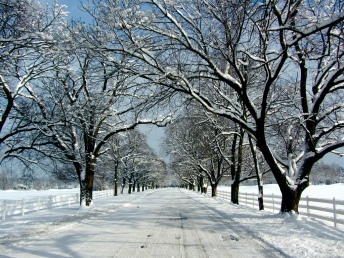Homily for Sunday, March 26, 2017
Lent 4A
John 9:1-41
Preached by Fr. Miller at Bethany Convent, the Order of St. Anne, Arlington, MA
I’ve heard it said that, in the East, “religion” is concerned with wisdom, and in the West, with sight. This morning’s Gospel – the story of Jesus healing the man born blind – is clearly of the West and our concern with sight.
 But I don’t want to begin with sight. I want to begin rather with something we all experience, something that has on some level brought us here this morning, that has led us to be Christians, to “walk in the way of the cross” and to hope in resurrection. That something is suffering. And I want to look at suffering from the context of the early Church’s catechumenate, the process whereby candidates were prepared for Baptism. For the most part, this year’s Lenten lectionary is the same lectionary that was used by the early Church during Lent for the preparation of candidates for Baptism at the Easter Vigil. Candidates would have been in the catechumenate two or three years, and these final Sundays offered a final push of preparation for their Baptism. Taken as a whole, these Scriptures present in a nutshell the process of awakening to fuller life, of experiencing “resurrection.” To sum up: The candidates would have gone from being in the “wilderness” and discovering that Jesus had a wilderness experience, too (Lent 1); to being in the dark with Jesus, as was Nicodemus (Lent 2); to being in the light with Jesus, as was the woman at the well (Lent 3); to being able to “see” with the man born blind (today); to experiencing resurrection, as did Lazarus (next week). Continue reading
But I don’t want to begin with sight. I want to begin rather with something we all experience, something that has on some level brought us here this morning, that has led us to be Christians, to “walk in the way of the cross” and to hope in resurrection. That something is suffering. And I want to look at suffering from the context of the early Church’s catechumenate, the process whereby candidates were prepared for Baptism. For the most part, this year’s Lenten lectionary is the same lectionary that was used by the early Church during Lent for the preparation of candidates for Baptism at the Easter Vigil. Candidates would have been in the catechumenate two or three years, and these final Sundays offered a final push of preparation for their Baptism. Taken as a whole, these Scriptures present in a nutshell the process of awakening to fuller life, of experiencing “resurrection.” To sum up: The candidates would have gone from being in the “wilderness” and discovering that Jesus had a wilderness experience, too (Lent 1); to being in the dark with Jesus, as was Nicodemus (Lent 2); to being in the light with Jesus, as was the woman at the well (Lent 3); to being able to “see” with the man born blind (today); to experiencing resurrection, as did Lazarus (next week). Continue reading

 You are probably familiar with the old saw that “there are none so blind as those who fail to see.” Our reading this morning from the Gospel according to Saint John is an obvious case in point. The whole lection turns on the irony that the man born blind sees and understands Jesus’ true identity as the “Son of Man” and the “light of the world,” while Jesus’ sighted opponents, “blind guides,” completely fail to grasp the obvious power and sanctity of this man of God. Even if they were unwilling to go as far as the blind man in asserting that Jesus is indeed the “Messiah,” the “Christ” of God, they know that their own tradition is not lacking in “signs and wonders” performed by the many prophets of God. And Jesus seems to anticipate his opponents’ willful ignorance because he goes to the trouble of mixing his saliva with mud and applying it to the blind man’s eyes. He could have simply commanded the restoration of his sight, as he does on other occasions in the Gospels, but, because the folk medicine of Jesus’ time invested saliva with medicinal qualities, he goes to the extra trouble of making the special poultice. Then he orders the blind man to rinse his eyes in the pool of Siloam, the collecting pond for the waters of the holy city Jerusalem, originating in the “living waters” of the Gihon Spring and passing through the Temple precincts—all highly symbolic places of special holiness in Second-Temple Judaism. And for those with “eyes to see” among St. John the Evangelist’s community of Jewish-Christians approximately seventy years later, the anticipation of the “illumination” that comes with Holy Baptism would have been obvious as well. Jesus gives the blind man not just his physical sight; he gives him spiritual vision as well. The “Christ” is the “light” by which we see light; the primordial light of the Creation that enters the cosmos even before the celestial bodies in the Genesis story of creation. In a culture so steeped in Temple and Torah, the failure to understand the meaning and import of Jesus’ “signs and wonders” can only be described as obtuseness at best, and incorrigible ignorance at worst.
You are probably familiar with the old saw that “there are none so blind as those who fail to see.” Our reading this morning from the Gospel according to Saint John is an obvious case in point. The whole lection turns on the irony that the man born blind sees and understands Jesus’ true identity as the “Son of Man” and the “light of the world,” while Jesus’ sighted opponents, “blind guides,” completely fail to grasp the obvious power and sanctity of this man of God. Even if they were unwilling to go as far as the blind man in asserting that Jesus is indeed the “Messiah,” the “Christ” of God, they know that their own tradition is not lacking in “signs and wonders” performed by the many prophets of God. And Jesus seems to anticipate his opponents’ willful ignorance because he goes to the trouble of mixing his saliva with mud and applying it to the blind man’s eyes. He could have simply commanded the restoration of his sight, as he does on other occasions in the Gospels, but, because the folk medicine of Jesus’ time invested saliva with medicinal qualities, he goes to the extra trouble of making the special poultice. Then he orders the blind man to rinse his eyes in the pool of Siloam, the collecting pond for the waters of the holy city Jerusalem, originating in the “living waters” of the Gihon Spring and passing through the Temple precincts—all highly symbolic places of special holiness in Second-Temple Judaism. And for those with “eyes to see” among St. John the Evangelist’s community of Jewish-Christians approximately seventy years later, the anticipation of the “illumination” that comes with Holy Baptism would have been obvious as well. Jesus gives the blind man not just his physical sight; he gives him spiritual vision as well. The “Christ” is the “light” by which we see light; the primordial light of the Creation that enters the cosmos even before the celestial bodies in the Genesis story of creation. In a culture so steeped in Temple and Torah, the failure to understand the meaning and import of Jesus’ “signs and wonders” can only be described as obtuseness at best, and incorrigible ignorance at worst.  Signs of endings all around us, darkness, death and winter days,
Signs of endings all around us, darkness, death and winter days,